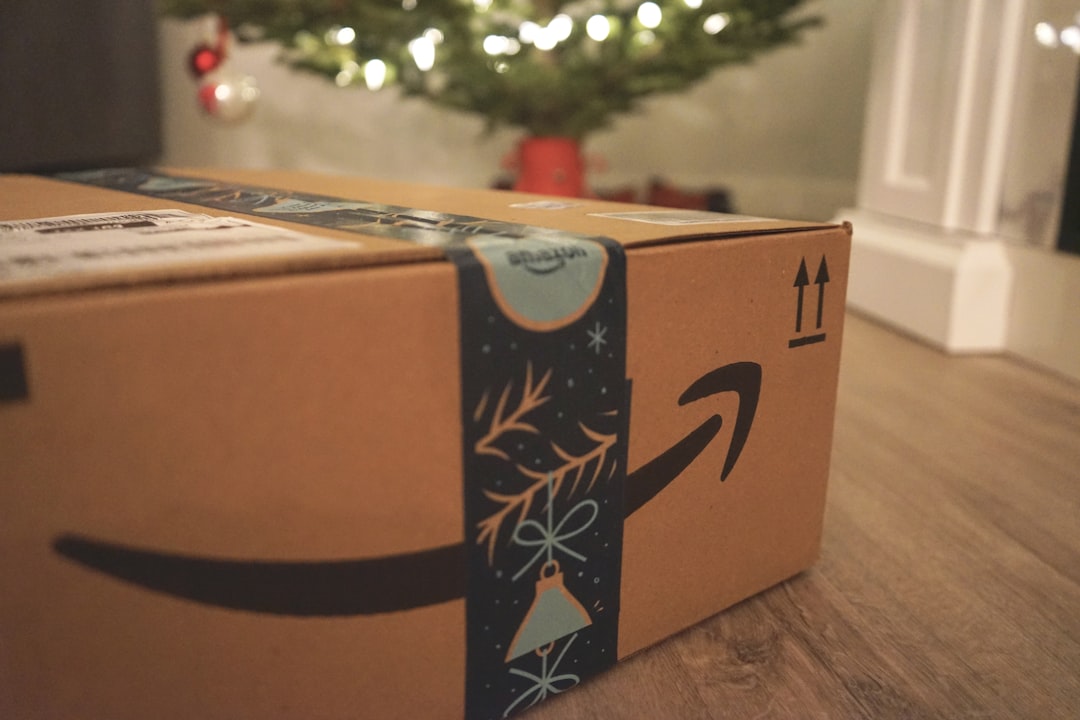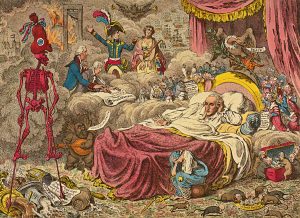Insights from Amazon Prime Day: Predicting Holiday Shopping …
Discover how Amazon Prime Day trends can forecast holiday shopping patterns. Stay ahead of the curve with our expert insights.
Increase in Online Shopping Behavior
Impact of Amazon Prime Day
Amazon Prime Day has become a significant indicator of consumer shopping behavior, particularly in the online retail sector. The event, which offers exclusive deals to Prime members, has seen a consistent rise in sales, highlighting the growing trend of online shopping.
In recent years, Prime Day has not only set records in terms of sales volume but has also influenced shopping patterns, with many consumers using the event to kickstart their holiday shopping.
This surge in activity during Prime Day suggests a shift in consumer behavior, with more individuals opting to shop online for convenience and better deals. The success of Prime Day can be seen as a precursor to the upcoming holiday shopping season, indicating a potential increase in online sales during this period.
Consumer Preferences and Convenience
The increase in online shopping behavior is largely driven by consumer preferences for convenience and variety.
Online platforms like Amazon offer a wide range of products that can be purchased with just a few clicks, eliminating the need for physical store visits. This convenience is particularly appealing during the holiday season when time is limited, and the pressure to find the perfect gift is high.
Moreover, the ability to compare prices and read reviews online empowers consumers to make informed purchasing decisions.
This level of transparency and ease of access is unmatched by traditional retail, further fueling the shift towards online shopping.
Technological Advancements and Personalized Experiences
Technological advancements have also played a crucial role in the increase in online shopping behavior. Enhanced mobile shopping experiences, secure payment gateways, and personalized recommendations have made online shopping more appealing to consumers.
Retailers are leveraging data analytics to understand consumer preferences and offer personalized shopping experiences, which in turn boosts customer satisfaction and loyalty.
As technology continues to evolve, it is expected that online shopping will become even more seamless and integrated into daily life, further accelerating the trend observed during events like Amazon Prime Day.
Implications for Holiday Shopping Trends
The patterns observed during Amazon Prime Day provide valuable insights into upcoming holiday shopping trends. Retailers can anticipate a significant portion of holiday sales to occur online, prompting them to optimize their digital storefronts and logistics to handle increased demand.
Additionally, the emphasis on early deals and promotions is likely to continue, as consumers increasingly prefer to start their holiday shopping well in advance.
Overall, the increase in online shopping behavior signals a transformative shift in the retail landscape, with digital platforms playing a pivotal role in shaping future shopping trends.
Emphasis on Early Holiday Shopping
Increased Consumer Awareness
Amazon Prime Day has become a significant indicator of consumer behavior, particularly in how it influences holiday shopping trends. With the event occurring well before the traditional holiday season, shoppers are increasingly aware of the benefits of starting their holiday shopping early.
This heightened awareness is driven by the desire to avoid last-minute stress and to take advantage of early discounts.
Consumers are becoming more strategic, leveraging early sales events like Prime Day to spread out their holiday spending. This trend not only alleviates financial pressure but also ensures that they secure popular items before they sell out.
Retailers’ Strategic Planning
Retailers, including Amazon, are capitalizing on this shift by extending their promotional periods and offering significant discounts earlier in the year.
The success of Prime Day has encouraged other retailers to launch similar sales events, effectively elongating the holiday shopping season. This strategic planning allows retailers to manage inventory more efficiently and capture early sales.
By analyzing consumer data from Prime Day, retailers can better anticipate demand for specific products during the holiday season.
This predictive approach helps in optimizing stock levels and tailoring marketing efforts to meet consumer preferences.
Impact on Supply Chain Management
The emphasis on early holiday shopping has significant implications for supply chain management. Retailers are adjusting their logistics to accommodate the increased demand earlier in the year, ensuring that they can meet consumer expectations for timely delivery.
This shift requires a more agile and responsive supply chain, capable of handling fluctuations in demand.
Additionally, early shopping trends help mitigate the risks associated with supply chain disruptions, which have become more prevalent in recent years. By spreading out the demand, retailers can better manage their resources and reduce the likelihood of bottlenecks during peak shopping periods.
Consumer Behavior and Preferences
Early holiday shopping is also reflective of changing consumer preferences.
Shoppers are increasingly valuing convenience and certainty, opting to complete their holiday purchases well in advance. This behavior is facilitated by the ease of online shopping and the availability of detailed product information and reviews.
Moreover, the trend towards early shopping aligns with a growing emphasis on sustainability, as consumers seek to make more thoughtful and deliberate purchasing decisions.
By planning their holiday shopping early, consumers can avoid impulsive buying and focus on quality over quantity.
Shift in Consumer Preferences
Increased Demand for Sustainable Products
Amazon Prime Day sales have highlighted a significant shift towards sustainable products. Consumers are increasingly prioritizing eco-friendly options, reflecting a growing awareness of environmental issues.
This trend is evident in the rising sales of products made from recycled materials, energy-efficient appliances, and items with minimal packaging. As the holiday season approaches, retailers can expect this demand to influence purchasing decisions, with more shoppers seeking out brands that demonstrate a commitment to sustainability.
Preference for Tech and Smart Home Devices
Another notable trend from Prime Day is the heightened interest in technology and smart home devices.
Products such as smart speakers, home security systems, and wearable technology saw substantial sales increases. This suggests that consumers are eager to integrate technology into their daily lives, a trend likely to continue through the holiday shopping season.
Retailers should consider highlighting tech products and offering competitive deals to attract tech-savvy shoppers.
Rise of Health and Wellness Products
Health and wellness have become a focal point for many consumers, as evidenced by the surge in sales of fitness equipment, supplements, and wellness gadgets during Prime Day. This shift indicates a growing consumer interest in maintaining a healthy lifestyle, which is expected to persist into the holiday season.
Retailers can capitalize on this trend by expanding their offerings in the health and wellness category and promoting products that support physical and mental well-being.
Increased Interest in Home and Lifestyle Products
The pandemic has led to a renewed focus on home and lifestyle products, a trend that was clearly reflected in Prime Day sales. Items such as home decor, kitchen appliances, and furniture experienced significant growth, as consumers continue to invest in making their living spaces more comfortable and functional.
This trend is likely to influence holiday shopping, with consumers seeking products that enhance their home environments.
Growing Popularity of Online Shopping
Prime Day sales also underscored the ongoing shift towards online shopping. Consumers are increasingly comfortable with making purchases online, valuing the convenience and variety it offers.
This trend is expected to dominate the holiday shopping season, with more consumers opting for online retailers to avoid crowds and enjoy the ease of home delivery. Retailers should focus on optimizing their online platforms and ensuring a seamless shopping experience to meet this growing demand.
Impact on Traditional Retailers
Increased Competition
Amazon Prime Day has set a high bar for sales events, creating a ripple effect that impacts traditional retailers.
As consumers become accustomed to the deep discounts and convenience offered by Amazon, brick-and-mortar stores face increased pressure to compete. This often means that traditional retailers must also offer significant discounts and promotions during the holiday shopping season to attract customers.
Moreover, the competitive pricing strategies employed by Amazon during Prime Day force traditional retailers to rethink their pricing models.
Retailers are compelled to either match or exceed these discounts, which can erode profit margins. This competitive environment necessitates strategic planning and innovative marketing tactics to maintain customer loyalty and market share.
Shift in Consumer Expectations
Prime Day has significantly altered consumer expectations, particularly in terms of pricing and convenience.
Shoppers now anticipate similar deals and seamless shopping experiences during the holiday season. Traditional retailers must adapt by enhancing their online presence and ensuring that their e-commerce platforms are equipped to handle increased traffic and transactions.
The expectation of fast and free shipping, popularized by Amazon, has also become a standard demand among consumers.
Retailers are thus challenged to optimize their supply chain and logistics operations to meet these expectations without incurring prohibitive costs.
Opportunities for Differentiation
Despite the challenges, Prime Day also presents opportunities for traditional retailers to differentiate themselves. By focusing on unique in-store experiences, personalized customer service, and exclusive product offerings, retailers can create a competitive edge that Amazon cannot easily replicate.
This differentiation can be particularly effective during the holiday shopping season when consumers are seeking unique gifts and experiences.
Additionally, retailers can capitalize on the community aspect of shopping by hosting events and promotions that encourage in-store visits. These strategies not only drive foot traffic but also foster brand loyalty and customer engagement.
Adoption of Omnichannel Strategies
The success of Amazon Prime Day underscores the importance of an omnichannel approach to retail.
Traditional retailers are increasingly adopting strategies that integrate their physical and online operations to provide a seamless shopping experience. This includes options like buy online, pick up in-store (BOPIS), and curbside pickup, which have gained popularity among consumers seeking convenience.
By leveraging technology and data analytics, retailers can better understand consumer behavior and tailor their offerings to meet evolving demands.
This omnichannel strategy is crucial for traditional retailers looking to remain competitive during the holiday shopping season and beyond.
FAQ
Q: How do Amazon Prime Day sales influence upcoming holiday shopping trends?
A: Amazon Prime Day sales can serve as a predictive indicator for holiday shopping trends by highlighting consumer preferences and spending behaviors. The types of products that see significant sales during Prime Day often hint at what will be popular during the holiday season. Additionally, the success of certain marketing strategies and discounts can inform retailers about effective approaches for holiday promotions.
Q: What consumer behaviors observed during Amazon Prime Day might impact holiday shopping?
A: During Amazon Prime Day, consumers often exhibit behaviors such as increased online shopping, preference for bundled deals, and interest in tech gadgets and smart home devices. These behaviors can carry over into the holiday season, suggesting that retailers should focus on digital sales channels, offer attractive bundles, and stock up on popular tech items to meet anticipated demand.
Q: Are there any specific product categories that perform well during Amazon Prime Day and are expected to trend during the holidays?
A: Yes, certain product categories consistently perform well during Amazon Prime Day and are likely to trend during the holidays. These include electronics like smartphones, tablets, and smart home devices, as well as fashion items, beauty products, and home goods. The popularity of these categories during Prime Day can signal strong consumer interest, suggesting they will be in demand during the holiday shopping season.
Takeaway
As we analyze the insights gained from Amazon Prime Day sales, it becomes evident that understanding consumer behavior is crucial for businesses to thrive in the upcoming holiday shopping season. Stay ahead of the curve by leveraging these trends to tailor your marketing strategies and offerings. Prepare your business for success by implementing data-driven decisions and staying agile in response to evolving consumer preferences. Embrace the changing landscape of retail by adapting to the latest trends and maximizing your potential for growth. Get ready to make this holiday season your most successful yet! Industry analysts believe this signals a shift in market dynamics.











Comments